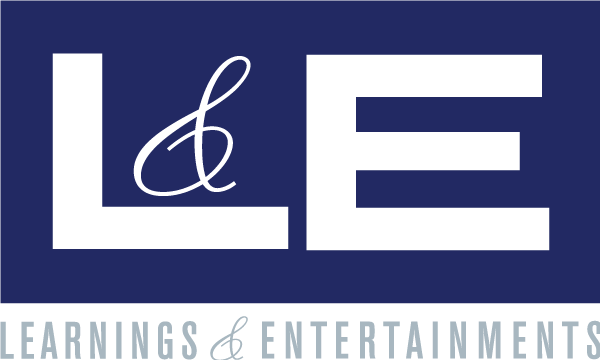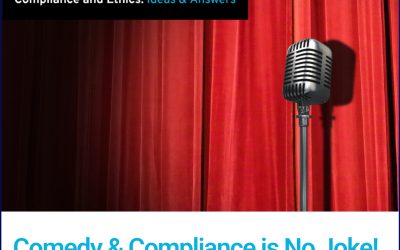People need reminding more than they need instruction. Compliance training expert Ronnie Feldman stresses that instruction isn’t enough. Think like an ad man to influence workplace behavior and corporate culture. (Note: A version of this article appears in Corporate Compliance Insights.)
A very wise and important person once said, “PEOPLE FORGET STUFF!” I can’t remember who said it first, but I know most recently… it was me!
“People Forget Stuff”
Most corporate training is rather long, boring and infrequent. This is particularly true of training on corporate risk – ethics, compliance, privacy, data security and so on. Long and boring is obviously a problem, because people don’t actually learn anything. But I’d like to focus this piece on the infrequency of compliance training. Even if your training is interactive and targeted and employees describe it as interesting and snazzy,* “infrequent” is still a problem. Infrequent training happens for practical reasons; you need your people to have time to do the thing they were hired to do, and taking them away from that thing – even for valuable, effective, snazzy training – is impractical. So we end up with training that happens infrequently.
But here’s the thing: The forgetting curve tells us that people forget 50 percent of content an hour after learning, 70 percent within a day and 90 percent within a week. Literary writer, poet, essayist and moralist Samuel Johnson famously said, “people need to be reminded more often than they need to be instructed.” He must be a smart fella, because he has a snazzy** wig!

There is also the concept of “working memory,” which is the short-term memory being used in the present. So even if you know something, it may not be available to you in the time of need because it is not in your working memory. This is one of the reasons people still click on phishing scams. It’s not that people don’t know to be skeptical. It’s that they are just not thinking about it at the time. This is also the issue when it comes to corporate risk topics. Employees might actually know about the policy, but they’re just not thinking about it at the time when the situation occurs.
Advertisers use the term “effective frequency” to refer to the number of times people need to be exposed to a message before it’s noticed and remembered. The actual number of times is debated, but let’s agree that it’s helpful to be exposed more than once and less than a bajillion. I think we can agree that there is benefit in short, frequent communications, reminders and reinforcements. However, instead of thinking about training reinforcement, I think ethics and compliance professionals would benefit from thinking about it like advertisers; instead of training reinforcement, think about deploying a bunch of short commercials.
Ethics & Compliance Needs to be Advertised
I use the term “commercials” because commercials don’t have to tell you everything you need to know. They convey a message and tell you where to go for more information. Reframing it this way helps keep messaging short and simple, allowing you to cut to the core message and be more creative with that messaging. Creative, interesting messaging is key; the message must stand out to get noticed, creative messaging is more easily remembered and recalled and you’ll be able to use it more frequently, gaining greater exposure. (Boring, preachy messages get tuned out, and your colleagues may not let you put those boring commercials in the places you’d like to.)
Your creative commercial could be based on simple messaging that promotes:
- The ethics & compliance team as helpful advisors and coaches. We’ve got your back.
- The confidentiality of the ethics helpline. And here’s how to access it.
- Speaking up to identify problems, ask questions and report concerns. Help us make the workplace better. Go here for more info.
- The availability of the code of conduct as a resource. You can find it here.
- The importance of integrity – every day, everywhere. We do what’s right, even when no one is looking.
- The danger of conflicts. For advice and support contact us here.
There are lots of clever ways to deliver these important, serious messages in a more entertaining wrapper. Remember, there’s a difference between having a difficult conversation and having a conversation about a difficult thing. I’ll write about ways to blend entertainment and learning in a separate article.
A simple message delivered in an interesting way can be deployed in lots of different ways. It could be a video, a graphic, a line of text, a GIF, a song, etc. This frees you up to put that commercial in lots of different places. I’m not talking about a put-up-a-poster-that-turns-into-wallpaper kind of solution. I’m talking about finding ways to embed those short interesting messages within the fabric of the organization.
- Place commercials in other department websites and other department newsletters.
- Play commercials as transition slides at department meetings, webinars, trainings and events.
- Play commercials on video message boards in common areas – between the message about your core values and the Taco Tuesday lunch special.
- Place commercials within leadership training and new hire onboarding.
- Place commercials as screensavers or rotating on the company intranet.
- Push commercials on internal social media channels, like Slack, Yammer, Jive, etc.
Show up where people congregate, whether that’s live or online.
This advertising approach – simple, short, frequent communications embedded in the fabric of the organization – can not only help keep important policies top of mind, but also drive traffic to learning resources, and it can also (when done well) start to influence behavior. This is what good advertising does. Remember, the employees’ default thinking when it comes to ethics and compliance is typically apathy, fear or annoyance. And that great training you did last quarter is almost certainly forgotten. If you want to influence behavior, continue trying to make that training snazzy.*** But remember, people need reminding more than they need instruction. Improve ease of access to information by showing up where they are with short, simple, interesting messages. Don’t just train… advertise.
*Snazzy = stylish and attractive
**I managed to use the word “snazzy” three times. I deserve extra credit for this.
***that’s four!




